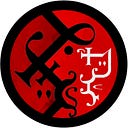Puppeteering: The Beast Folks’ theatre
The coexistence of different species in the same land has shaped the culture of the Beasts’ Nations in surprising ways. Big and small issues regarding the different body types of the various lineages created many peculiarities and quirks.
Let’s take, for example, theater. Clearly, there are some complications in making costumes and choosing a cast when your actors have such different builds. Even masks can be hard to use with such diverse face structures. This inconvenience could have driven entertainers to more abstract art forms, but the Beast folks inherited a taste for the stage from the many years under the Infernal rules.
Modest and folksy entertainers, unable to afford the cost of costumes and a varied cast, started to use puppets for their plays. Puppets’ shows became increasingly popular, eventually becoming the most beloved kind of show.
Every region has its schools, styles, and tastes in puppeteering, but there are some common elements.
The puppet itself must have many articulations and refined costumes: the craftmanship is part of the spectacle.
A narrator and a musician tell the story while the puppets don’t “speak”, the narrator should do their voices if it is the case (this is an influence of the Storytellers of the sultanate, who usually work in pairs and don’t have any mise en scene).
Many puppet companies have trained bard in their ranks, able to perform magic tricks, like creating lights or sound effects. Other companies have real masters, able to make the puppets act at a distance through spells or changing their shape on stage.
Getaberan has two streets full of theatres: these establishments are much smaller than the big infernal opera houses and much more lively than the auster elven concert halls. These establishments are always open and many work as inns as well. The theatre street on the seaside district caters mainly to the sailors and offers low-brow entertainment: it can be a satirical farce or tearjerking melodrama, both often inspired by current events in the city or aboard. The riverside district theaters are where the art form is pushed forward, with the most stunning magical effects and more elaborate texts and music. Bards will watch each other’s work not only to see what is new but also to ensure that no enchantment magic is used to sway the audience. If a puppeteer company gets caught using some kind of charm, one can be sure that at least a couple of them will be stabbed in a back alley after the show.
Beasts’ puppeteering developed independently from the Uxalian marionette tradition: both gnomes and dwarves have their plays with automatons and golems as actors. In the last couple of decades, the renewed trading routes between the two continents have created some interesting contaminations. Beast puppeteers are introducing magic lanterns and shadow plays from the Gnomes Sheikdoms, and at the same time are employed by dwarves to direct their life-size artificial actors. Some theaters in Getaberan are employing some companies from the (for them) exotic southern continent to steal some patrons from the competing establishments.
